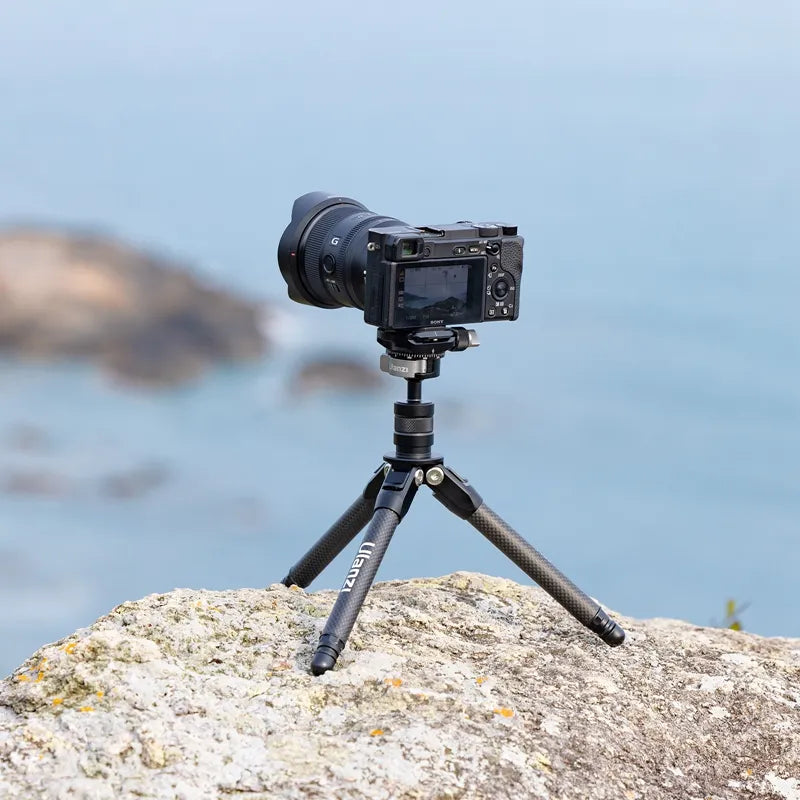Unlock Your Creativity: The Ultimate Tripod for Every Shot You Desire!
In the world of photography and videography, having the right equipment can make all the difference. One of the most crucial pieces of gear is a versatile tripod. Whether you're capturing breathtaking landscapes, intimate portraits, or dynamic video scenes, a good tripod can enhance your creativity and provide the stability needed to achieve stunning results. This article aims to guide you through the process of selecting the perfect tripod that caters to both your photography and videography needs. We will explore the essential features, types, and maintenance tips that will help you make an informed decision and elevate your visual storytelling.

Understanding the Basics of Tripods
Before diving into the specifics of tripods, it's important to understand their basic components. A tripod typically consists of three main parts: the legs, the head, and the mounting options. The legs provide stability and can often be adjusted in height, allowing you to find the perfect shooting angle. The tripod head is where you attach your camera; it can be a ball head, pan-tilt head, or fluid head, each offering different levels of control over your camera's positioning. Additionally, the mounting options should be compatible with your camera, whether it's a DSLR, mirrorless, or a smartphone. Stability is crucial when capturing images or videos, as even the slightest shake can ruin a shot. Height adjustments are also vital; a good tripod should allow you to shoot from various angles, whether standing tall for a landscape shot or crouching low for a creative perspective.
Key Features to Look for in a Versatile Tripod
When shopping for a versatile tripod, there are several key features to consider that will impact both your photography and videography experience. First, look at the weight capacity—the tripod should be sturdy enough to support your camera and any additional gear, like lenses or microphones. The material is also critical: aluminum is lightweight and durable, while carbon fiber is even lighter but often more expensive. Portability is another factor; if you plan to travel or hike with your tripod, consider models that are compact and easy to carry. Ease of setup can significantly affect your shooting efficiency, especially in dynamic environments. Quick-release plates and adjustable legs that lock securely will allow you to move swiftly between shots. Each of these features plays a role in how well your tripod will serve you in various shooting situations.
Tripod Types and Their Uses
There are several types of tripods available, each designed for specific uses in photography and videography. Traditional tripods are the most common and provide excellent stability, making them ideal for studio and landscape photography. Compact tripods are lightweight and easily portable, perfect for travel or outdoor shoots but may sacrifice some stability in windy conditions. Flexible tripods, like gorilla pods, can wrap around various surfaces, allowing for unique angles and placements that traditional tripods cannot achieve. Personal anecdotes from friends have shown me how a flexible tripod can be a lifesaver when shooting in tight spaces or unconventional setups. For instance, a friend used one to secure her camera to a railing for a unique timelapse video, showcasing how versatile equipment can lead to creative solutions.
How to Choose the Right Tripod for Your Needs
Choosing the right tripod requires a careful assessment of your personal needs based on your shooting style, environment, and budget. Consider the types of photography and videography you typically engage in—are you more of a landscape photographer who needs stability, or a vlogger who requires portability? Analyzing your environment is also crucial; if you frequently shoot in rugged terrains, a sturdy, weather-resistant tripod may be necessary. Lastly, set a budget that reflects your commitment to photography and videography. It's wise to invest in a quality tripod, as it can be a long-term companion for your creative endeavors. Additionally, think about future needs. Will you be upgrading your camera gear? Choosing a tripod with a higher weight capacity can save you from needing a replacement down the line.
Maintaining and Caring for Your Tripod
To ensure your tripod lasts for years, proper maintenance and care are essential. Regularly clean the legs and head to remove dust and debris that can impede movement and stability. For outdoor shoots, especially in muddy or sandy environments, it's crucial to wipe down your tripod after use. Store your tripod in a dry place and avoid leaving it in damp conditions to prevent rust and wear. Regularly check for signs of wear and tear on the leg locks and head mechanisms—this will help you catch any issues before they become serious. By taking these simple maintenance steps, you can keep your tripod in excellent condition and ready for your next creative adventure.
Final Thoughts on Selecting the Ideal Tripod
In summary, investing in a versatile tripod is a decision that can significantly enhance the quality of both your photos and videos. By understanding the various components, key features, and types of tripods available, you can choose one that best fits your needs. Remember to consider your shooting style, environment, and future upgrades as you make your selection. With proper maintenance, your tripod can serve as a reliable tool in your creative toolkit for years to come. So take the time to explore your options, and unlock your creativity with the perfect tripod!







